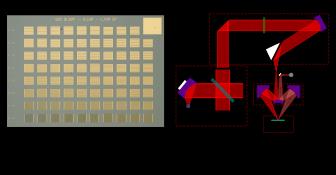
Credit: University of Southampton
New research from the University of Southampton has successful discovered a way to bind two negatively charged electron-like particles which could create opportunities to form novel materials for use in new technological developments.
Positive and negative electric charges attract each other, forming atoms, molecules, and all that we usually refer as matter. However, negative charges repel each other, and in order to form atom-like bound objects some extra glue is needed to compensate this electrostatic repulsion and bind the particles together.
In this latest study, published in the journal Nature Physics, an international team, led by Professor Simone De Liberato from the School of Physics and Astronomy at the University of Southampton, demonstrated for the first time that photons, the particles which compose light, can be used to glue together negative charges, creating a novel form of matter they named a Photon Bound Exciton
Implementing a theoretical prediction published last year by the same team, Prof De Liberato and co-workers fabricated a nano-device, trapping electrons into nanoscopic wells. They started by showing that photons that struck the device with high enough energy extracted electrons from the wells, an expected manifestation of the photoelectric effect, whose discovery earned Einstein his 1921 Nobel prize.
Prof De Liberato and his team then enclosed the device between two gold mirrors, which trapped the photons and focussed the luminous energy close to the electrons, dramatically increasing the interaction between light and matter. They observed that a negatively-charged electron kicked out by a photon then remains instead trapped in the well, bound to the other negatively-charged electrons in a novel electronic configuration stabilised by the photon.
This result demonstrates the possibility of engineering novel artificial atoms with designer electronic configurations, dramatically expanding the list of materials available for scientific and technological applications.
Explaining the significance of his team’s discovery, Prof De Liberato said: “We demonstrated how to use light as a sort of subatomic ziptie, binding together electrons to create novel atom-like objects. Doing so we broadened the catalogue of materials available to design photonic devices. I look forward to see how the many colleagues working in photonics will exploit this extra leeway to engineer novel amazing devices.”
###
The paper “Excitons bound by photon exchange” has been published in Nature Physics with DOI 10.1038/s41567-020-0994-6
Media Contact
Steve Bates
[email protected]
Related Journal Article
http://dx.




